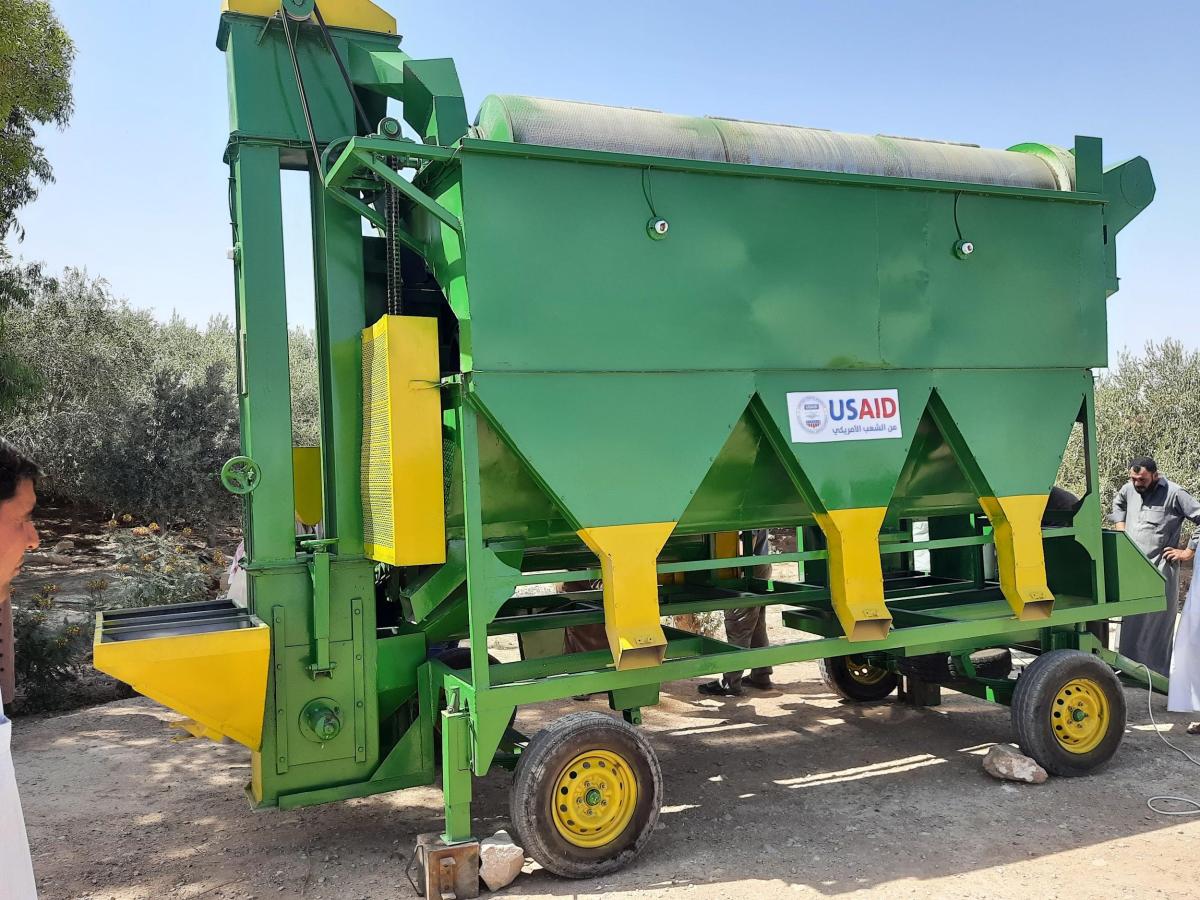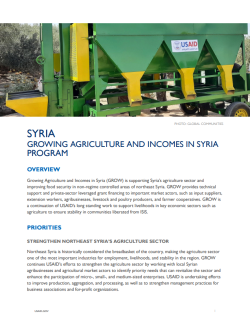OVERVIEW
Growing Agriculture and Incomes in Syria (GROW) is supporting Syria’s agriculture sector and improving food security in non-regime controlled areas of northeast Syria. GROW provides technical support and private-sector leveraged grant financing to important market actors, such as input suppliers, extension workers, agribusinesses, livestock and poultry producers, and farmer cooperatives. GROW is a continuation of USAID’s long standing work to support livelihoods in key economic sectors such as agriculture to ensure stability in communities liberated from ISIS.
PRIORITIES
STRENGTHEN NORTHEAST SYRIA’S AGRICULTURE SECTOR
Northeast Syria is historically considered the breadbasket of the country, making the agriculture sector one of the most important industries for employment, livelihoods, and stability in the region. GROW continues USAID's efforts to strengthen the agriculture sector by working with local Syrian agribusinesses and agricultural market actors to identify priority needs that can revitalize the sector and enhance the participation of micro-, small-, and medium-sized enterprises. USAID is undertaking efforts to improve production, aggregation, and processing, as well as to strengthen management practices for business associations and for-profit organizations.
KEY RESULTS
Under the legacy Supporting Livelihoods in Syria
- Through USAID’s delivery of high quality wheat seeds, agricultural equipment (i.e. seed sorting machines, tractors, generators), paired with good agricultural practices training, the SLS program was able to cultivate over 28,000 hectares of land in northeast Syria.
- Rehabilitated wheat, livestock, and bread value chain infrastructure including 14 bakeries, 1 flour mill, 1 seed sorting facility, and1 fodder mill. Thanks to the renovations, the bakeries were able to increase daily bread production from 3.2 to 47.7 metric tons per day and increased production from rehabilitated bakeries expanded access to subsidized bread for 260,000 people.
- Provided 4,429 metric tons of seed to farmers (alfalfa, wheat). Target farmers saw their yields quadrupel (442% increase in yield of wheat production).
- Rehabilitated 4 irrigation systems bringing 8,368 hectares under improved irrigation.
- Over 7,300 farmers benefited from the good agricultural practices training.
- Supported 85 farmer’s cooperatives with seed multiplication and 43 with agriculture equipment.
EXPECTED RESULTS
GROW aims to increase local agricultural production, improve food availability in local markets, and boost incomes for farmers and agribusiness, by:
- Improving access to and increasing the adoption of new and improved agricultural inputs, technologies, services, infrastructure, and management practices.
- Increasing training and adoption of practices that promote resilience to climate change and shocks.
- Increasing the volume of production at the farm and firm level.
- Strengthening horizontal and vertical market linkages, to increase market connections between farmers and other producers, between input suppliers and producers, and then between processors and exporters.
- Improving access to alternative financial solutions and business development services.


